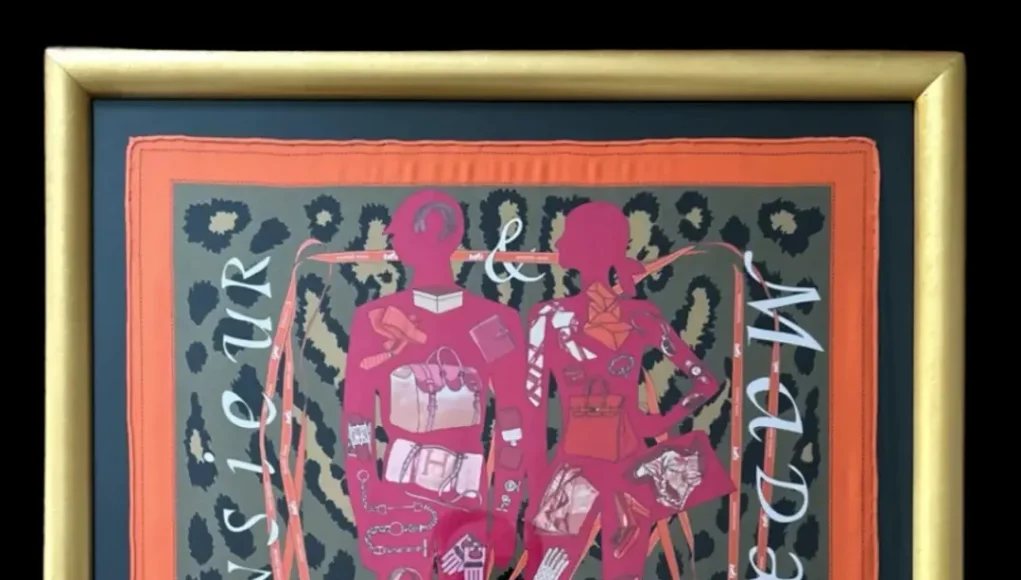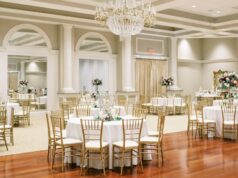In the luxury fashion industry, heritage and craftsmanship have always been the most significant traits, which the vintage Hermès scarf epitomizes brilliantly. Every scarf tells a different tale: of the artist’s genius, cultural impact, and the intricacy of the French silk printing method.
The great demand for the scarves, however, leads to the birth of imitators. If you are among the collectors, vintage-fashion enthusiasts, or simply a person fascinated by traditional design, then the knowledge of identifying the authentic scarves will allow you to buy (or give) with complete confidence.
The Artistry Behind Every Hermès Scarf
An authentic Hermès scarf isn’t merely a fashion accessory, it’s an art piece that you can wear. The French house has partnered with painters, illustrators, and graphic artists to produce the carré, a silk square that has been a byword for luxury since 1937. Each pattern is meticulously planned, goes through a meticulous process of printing with a large number of colors, and is then finished by skilled hands.
The story of the designer, the year of release, and the condition of the scarf all together determine the collectors’ interest to a great extent and thus make the vintage Hermès scarf very valuable. The first step towards authentication is to be aware of these details.
Step 1: Start with the Silk
The texture is one of the most significant features that separates a vintage Hermès scarf from others. The genuine scarves are made from the finest mulberry silk, which has a good combination of softness and thickness. The texture is supposed to be close-knit and even, and the weight of the scarf should be such that it falls beautifully without being stiff at all.
Light should be used to examine the fabric, the design should be clear, and the hues should be the same. Counterfeits usually have a very thin, excessively shiny, or plastic-like feel, and the colours might appear dull in comparison to the vibrant, multi-layered tones created by Hermès’ intricate multi-screen printing technique.
Step 2: Examine the Craftsmanship
Observe them with great attention. Real Hermès scarves are rolled and stitched by hand, usually on the front side of the artwork. The sewing is done in tiny, uniform, and equally tense lines. A machine-stitched or brightly finished hem is a typical indication of a copy.
Another minor yet very clear sign of Hermès production precision is the perfect alignment of the printing with the border, which you will notice if you take a close look. Any overlapping, blurring, or misalignment could be interpreted as a reason to raise an eyebrow.
Step 3: Read the Details in the Print
Every Hermès scarf has some discreet but significant signs that are common to all.
- The “Hermès – Paris” signature is the most common, and it is usually located at some point within the design, presented artistically and not through stamping.
- The name of the artist is also included in many instances, together with “dessiné par [name]”.
- Scarves that are produced in France have the “Made in France” label either on the care tag or along the design edge.
If any of these elements are not present, or if the printing is of poor quality or the wrong font, be very cautious; it might be a recent reproduction or an altered copy.
Step 4: Condition and Provenance
A certified vintage Hermès scarf, through and through, has to be checked for its condition. First, check for the aforementioned factors: pulls, stains, or fading of the colours. Light to moderate wear is accepted; however, too much wear may become a reason for decreasing the item’s value as well as attractiveness. The past ownership or usage of the item further influences the value: the source from which the scarf was taken, and the manner of keeping it can be a plus or minus. Artistic and reputable means of authentication are generally offered by the curators and the boutiques.
The thoughtful acquisition would help here. There are some sustainable luxury makers like Vintage Luxe Up, a pioneer in turning genuine vintage Hermès scarves into framed art and bespoke home decor, who would not hesitate to emphasize verifying every piece before re-imagining it. Their method shows how authentication and preservation are interconnected in a sustainable fashion.
Step 5: Be Wary of “too good to be true” Offers
Because of their collectibility, vintage Hermès scarves often command high prices depending on the design and rarity. Extremely low prices on resale platforms should raise red flags. Ask for detailed photos of the corners, hems, and signature areas before purchasing online.
You can also reference trusted marketplaces, archives, or authentication experts for comparison. In general, knowledge, not just of the logo, but of the artistry, is your best protection.
Step 6: When in Doubt, Seek a Trusted Source
The market for luxury vintage goods has expanded rapidly, and professional curation plays an essential role in maintaining trust. Collectors increasingly turn to verified sellers and ateliers that specialise in genuine designer textiles.
Brands like Vintage Luxe Up operate within that niche: they source, authenticate, and creatively repurpose original Hermès scarves into one-of-a-kind decor pieces, giving each design a new chapter while preserving its heritage. Their approach reflects a growing movement, one where sustainability, craftsmanship, and authenticity intersect.
The Reward of True Authenticity
The process of figuring out how to tell a vintage Hermès scarf from a fake takes a great deal of time, but at the same time, it increases one’s appreciation for the creative skills that have been applied. Each genuine scarf is a work of art that took many hours of a craftsman’s skill, starting from the hand-rolled hem and ending with the careful mixing of colours.
Today, in the time of fast fashion and mass copying, these vintage fabrics are a clear reminder of the original meaning of luxury: patience, detail, and a human touch. It does not matter if you wear your scarf, frame it, or use it as a part of your interior; the authenticity factor will make sure that the story you are keeping is a true one, and that is what makes it everlasting.








